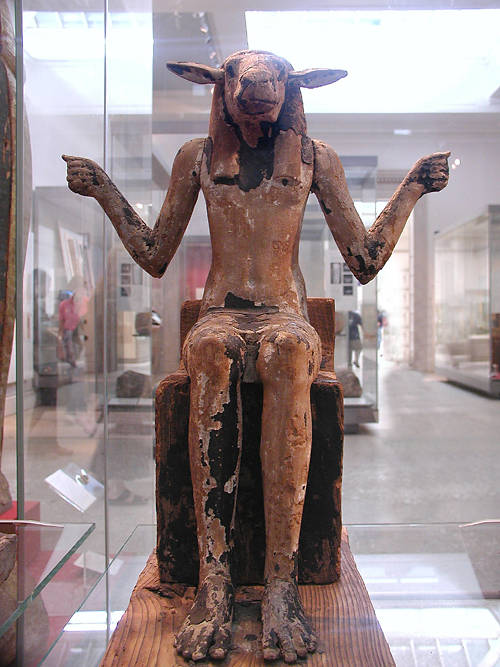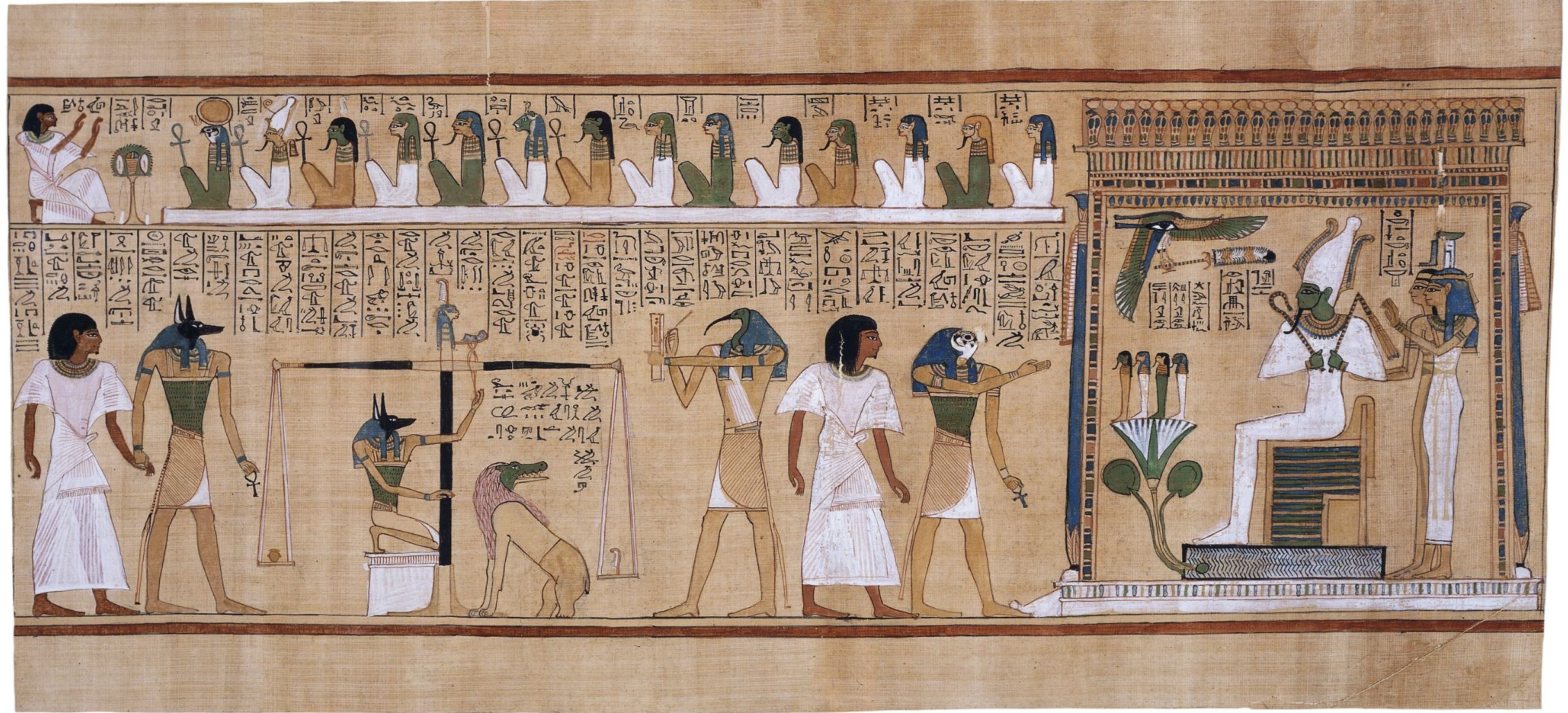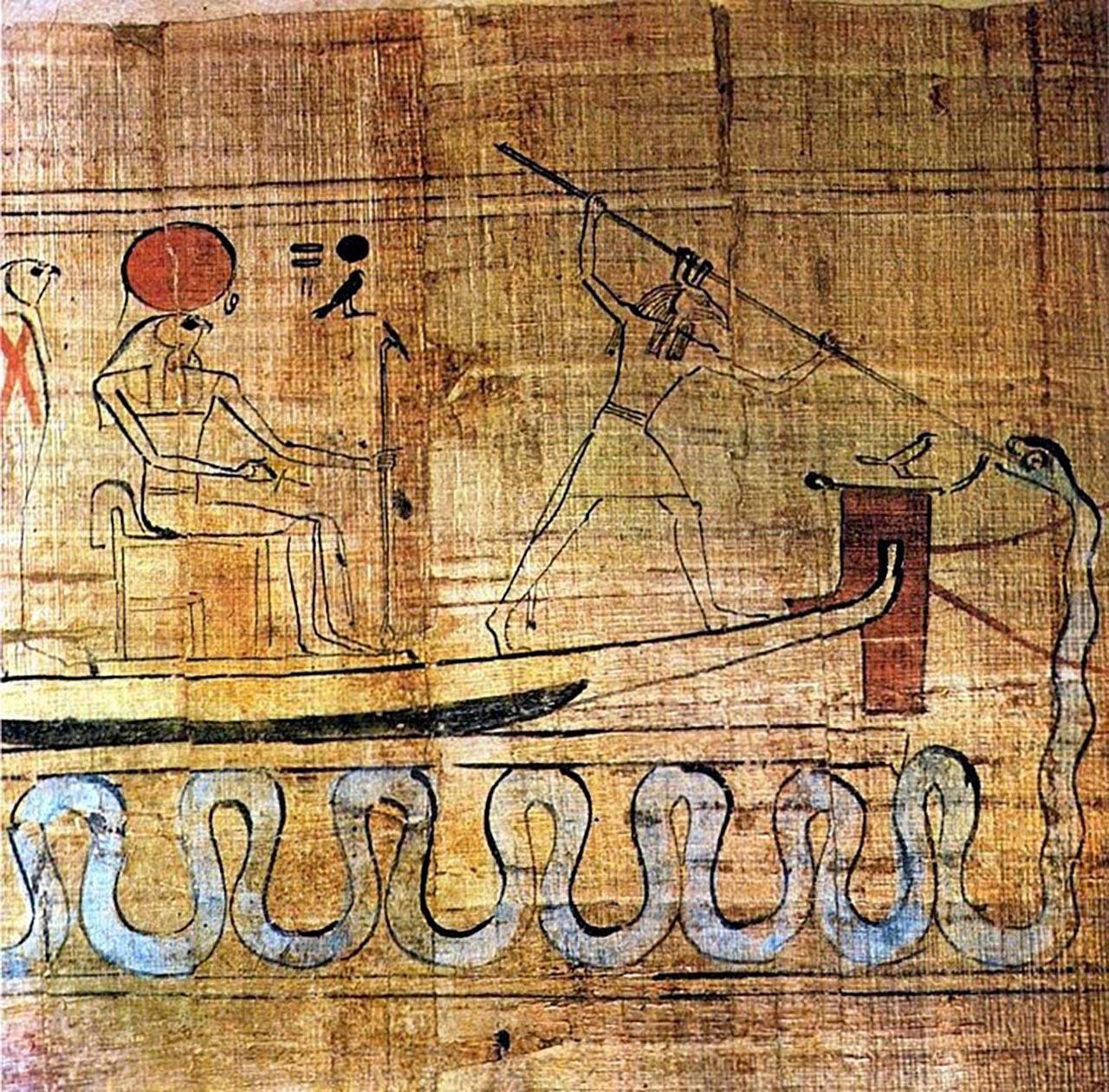|
Gate Deities Of The Underworld
The gate deities of the underworld were ancient Egyptian minor deities charged with guarding the gates of the Egyptian underworld.Hart 1986, pp. 68–72.Wilkinson 2003, pp. 81–2. Description and partition The Egyptians believed that in the netherworld, the Duat, there were various gates, doors and pylons crossed every night by the solar boat ( Atet) of the sun-god Ra and by the souls directed to the world of the dead. Ancient funerary texts provide many different descriptions of the afterlife gates. Sometimes more than 1,000 guardian deities are listed. According to a more general view, every gate was guarded by a minor god who allowed access only to the souls capable of pronouncing the secret name of the god himself, as a sort of "password". The walls of many Pharaonic tombs in the Valley of the Kings are decorated with the texts of the Book of Gates, which describes the twelve gates or pylons of the underworld: in spite of being imagined as architectural barriers to ... [...More Info...] [...Related Items...] OR: [Wikipedia] [Google] [Baidu] |
Duat
The Duat or Tuat (Ancient Egyptian: Hieroglyph: 𓇽 romanized: dwꜣt) is a concept in ancient Egyptian mythology involving death. It is most often seen as a realm where people go after they die. Due to linguistic shifts within Ancient Egypt, the ''Duat'' has also been called Te () and Amenthes (). What is known of the ''Duat'' derives principally from funerary texts such as the '' Book of Gates'', the ''Book of Caverns'', the '' Coffin Texts'', the '' Amduat'', and the ''Book of the Dead,'' among many other sources. It is generally known best as a dark subterranean realm that not only houses the deceased, but a variety of deities. Common deities depicted in these texts are Osiris, Anubis, Thoth, Horus, and Maat in various forms. While all of these documents involve the ''Duat'', each of them fulfilled a different purpose and depict the ''Duat'' in a variety of unique ways. Overview This realm is most often depicted as a setting for a variety of rituals and mythological e ... [...More Info...] [...Related Items...] OR: [Wikipedia] [Google] [Baidu] |
Perception
Perception () is the organization, identification, and interpretation of sensory information in order to represent and understand the presented information or environment. All perception involves signals that go through the nervous system, which in turn result from physical or chemical stimulation of the sensory system.Goldstein (2009) pp. 5–7 Vision involves light striking the retina of the eye; smell is mediated by odor molecules; and hearing involves pressure waves. Perception is not only the passive receipt of these signals, but it is also shaped by the recipient's learning, memory, expectation, and attention. Gregory, Richard. "Perception" in Gregory, Zangwill (1987) pp. 598–601. Sensory input is a process that transforms this low-level information to higher-level information (e.g., extracts shapes for object recognition). The following process connects a person's concepts and expectations (or knowledge) with restorative and selective mechanisms, ... [...More Info...] [...Related Items...] OR: [Wikipedia] [Google] [Baidu] |
Falcon
Falcons () are birds of prey in the genus ''Falco'', which includes about 40 species. Some small species of falcons with long, narrow wings are called hobbies, and some that hover while hunting are called kestrels. Falcons are widely distributed on all continents of the world except Antarctica, though closely related raptors did occur there in the Eocene. Adult falcons have thin, tapered wings, which enable them to fly at high speed and change direction rapidly. Fledgling falcons, in their first year of flying, have longer flight feathers, which make their configuration more like that of a general-purpose bird such as a broadwing. This makes flying easier while still learning the aerial skills required to be effective hunters like the adults. The falcons are the largest genus in the Falconinae subfamily of Falconidae, which also includes two other subfamilies comprising caracaras and a few other species of "falcons". All these birds kill prey with their beaks, using a ... [...More Info...] [...Related Items...] OR: [Wikipedia] [Google] [Baidu] |
Whip
A whip is a blunt weapon or implement used in a striking motion to create sound or pain. Whips can be used for flagellation against humans or animals to exert control through pain compliance or fear of pain, or be used as an audible cue through the distinct whipcrack effect. The portion used for striking is generally either a firm rod designed for direct contact, or a flexible line requiring a specialized swing. The former is easier and more precise, the latter offers longer reach and greater force. Some varieties, such as a hunting whip or lunge whip, have an extended stock section in addition to the line. Whips such as the "cat o' nine tails" and knout are specifically developed for corporal punishment or torture on human targets. Certain religious practices and BDSM activities involve the self-use of whips or the use of whips between consenting partners. Misuse on animals may be considered animal cruelty, and misuse on humans may be viewed as assault. Use Whips are genera ... [...More Info...] [...Related Items...] OR: [Wikipedia] [Google] [Baidu] |
Isfet (Egyptian Mythology)
Isfet or Asfet (meaning " injustice", " chaos", or "violence"; as a verb, “to do evil”) is an ancient Egyptian term from Egyptian mythology used in philosophy, which was built on a religious, social and politically affected dualism. Isfet was the counter to Maat, which was order. Isfet did not have a physical form. Rather, it was believed that Isfet was personified in the form of Apep. Isfet was important in Egyptian culture as Isfet showed that there is balance in the world. Principles and ideology ''Isfet'' was thought to be the counterpart of the term '' Ma'at'' (meaning "order" or "harmony"). According to ancient Egyptian beliefs, Isfet and Ma'at built a complementary and also paradoxical dualism: one could not exist without its counterpart. Isfet and Ma'at balanced each other. Ma'at was to overcome isfet, 'that which is difficult', 'evil', 'disharmonious', and 'troublesome'. Isfet was to be overcome by good, which would replace disunity with unity and disorder wi ... [...More Info...] [...Related Items...] OR: [Wikipedia] [Google] [Baidu] |
Chaos (cosmogony)
Chaos () is the cosmological void state preceding the creation of the universe (the cosmos) in early Greek cosmology. It can also refer to an early state of the cosmos constituted of nothing but undifferentiated and indistinguishable matter. Etymology Greek ''kháos'' () means ' emptiness, vast void, chasm, abyss', related to the verbs ''kháskō'' () and ''khaínō'' () 'gape, be wide open', from Proto-Indo-European ', cognate to Old English ''geanian'', 'to gape', whence English '' yawn''. It may also mean space, the expanse of air, the nether abyss, or infinite darkness. Pherecydes of Syros (fl. 6th century BC) interprets ''chaos'' as water, like something formless that can be differentiated. Greco-Roman tradition Hesiod and the pre-Socratics use the Greek term in the context of cosmogony. Hesiod's Chaos has been interpreted as either "the gaping void above the Earth created when Earth and Sky are separated from their primordial unity" or "the gaping space below the ... [...More Info...] [...Related Items...] OR: [Wikipedia] [Google] [Baidu] |
Evil
Evil, as a concept, is usually defined as profoundly immoral behavior, and it is related to acts that cause unnecessary pain and suffering to others. Evil is commonly seen as the opposite, or sometimes absence, of good. It can be an extremely broad concept, although in everyday usage it is often more narrowly used to talk about profound wickedness and against common good. It is generally seen as taking multiple possible forms, such as the form of personal moral evil commonly associated with the word, or impersonal natural evil (as in the case of natural disasters or illnesses), and in religious thought, the form of the demonic or supernatural/eternal. While some religions, world views, and philosophies focus on "good versus evil", others deny evil's existence and usefulness in describing people. Evil can denote profound immorality, but typically not without some basis in the understanding of the human condition, where strife and suffering ( cf. Hinduism) are the ... [...More Info...] [...Related Items...] OR: [Wikipedia] [Google] [Baidu] |
Apep
Apophis (; ), also known as Apep () or Aphoph (, ) Erman, Adolf, and Hermann Grapow, eds. 1926–1953. ''Wörterbuch der aegyptischen Sprache im Auftrage der deutschen Akademien''. 6 vols. Leipzig: J. C. Hinrichs'schen Buchhandlungen. (Reprinted Berlin: Akademie-Verlag GmbH, 1971). is the ancient Egyptian deity who embodied darkness and disorder, and was thus the opponent of light and Maat (order/truth). Ra was the bringer of light and hence the biggest opposer of Apophis. Features Because Ra was the solar deity, bringer of light, and thus the upholder of Maat, Apophis was viewed as the greatest enemy of Ra, and thus was given the title ''Enemy of Ra'', and also "the Lord of Chaos". "The Lord of Chaos" was seen as a giant snake or serpent leading to such titles as ''Serpent from the Nile'' and ''Evil Dragon''. Some elaborations said that he stretched 16 yards in length and had a head made of flint. Presented on a Naqada I (c. 4000–3550 BCE) C-ware bowl (now ... [...More Info...] [...Related Items...] OR: [Wikipedia] [Google] [Baidu] |
Nubians
Nubians () ( Nobiin: ''Nobī,'' ) are a Nilo-Saharan speaking ethnic group indigenous to the region which is now northern Sudan and southern Egypt. They originate from the early inhabitants of the central Nile valley, believed to be one of the earliest cradles of civilization. In the southern valley of Egypt, Nubians differ culturally and ethnically from Egyptians, although they intermarried with members of other ethnic groups, especially Arabs. They speak Nubian languages as a mother tongue, part of the Northern Eastern Sudanic languages, and Arabic as a second language. Neolithic settlements have been found in the central Nubian region dating back to 7000 BC, with Wadi Halfa believed to be the oldest settlement in the central Nile valley. Parts of Nubia, particularly Lower Nubia, were at times a part of ancient Pharaonic Egypt and at other times a rival state representing parts of Meroë or the Kingdom of Kush. By the Twenty-fifth Dynasty (744 BC–656 BC), all of Egy ... [...More Info...] [...Related Items...] OR: [Wikipedia] [Google] [Baidu] |
Ancient Libya
During the Iron Age and Classical antiquity, ''Libya'' (from Greek :wikt:Λιβύη, Λιβύη: ''Libyē'', which came from Berber language, Berber: ''Libu'') referred to the area of North Africa directly west of the Nile, Nile river (Modern day Libya, Tunisia, Algeria and Morocco), not to be confused with the modern country of Libya, which only represents the eastern part of the territory at the time. Ancient Libya was one of the three parts of the world of the ancients (Libya, Asia, Europa). The territory also had part of the Mediterranean Sea named after it called the Libyan Sea or ''Mare Libycum'' which was the part of the Mediterranean Sea, Mediterranean south of Crete, between Cyrene, Libya, Cyrene and Alexandria. Ancient Greece, Greek and Roman people, Roman geographers placed the dividing line between Libya and Asia at the Nile because the entire region south of the Mediterranean and west of the Nile was homogeneous linguistically, and the Berber language was used all acr ... [...More Info...] [...Related Items...] OR: [Wikipedia] [Google] [Baidu] |
Levant
The Levant ( ) is the subregion that borders the Eastern Mediterranean, Eastern Mediterranean sea to the west, and forms the core of West Asia and the political term, Middle East, ''Middle East''. In its narrowest sense, which is in use today in archaeology and other cultural contexts, it is equivalent to Cyprus and a stretch of land bordering the Mediterranean Sea in Western AsiaGasiorowski, Mark (2016). ''The Government and Politics of the Middle East and North Africa''. p. 5: "... today the term ''Levantine'' can describe shared cultural products, such as Levantine cuisine or Levantine archaeology". .Steiner & Killebrew, p9: "The general limits ..., as defined here, begin at the Plain of 'Amuq in the north and extend south until the Wâdī al-Arish, along the northern coast of Sinai. ... The western coastline and the eastern deserts set the boundaries for the Levant ... The Euphrates and the area around Jebel el-Bishrī mark the eastern boundary of the northern Levant, as d ... [...More Info...] [...Related Items...] OR: [Wikipedia] [Google] [Baidu] |
Ethnic Group
An ethnicity or ethnic group is a group of people with shared attributes, which they collectively believe to have, and long-term endogamy. Ethnicities share attributes like language, culture, common sets of ancestry, traditions, society, religion, history or social treatment. Ethnicities may also have a narrow or broad spectrum of genetic ancestry, with some groups having mixed genetic ancestry. ''Ethnicity'' is sometimes used interchangeably with ''nation'', particularly in cases of ethnic nationalism. It is also used interchangeably with '' race'' although not all ethnicities identify as racial groups. By way of assimilation, acculturation, amalgamation, language shift, intermarriage, adoption and religious conversion, individuals or groups may over time shift from one ethnic group to another. Ethnic groups may be divided into subgroups or tribes, which over time may become separate ethnic groups themselves due to endogamy or physical isolation from the parent gr ... [...More Info...] [...Related Items...] OR: [Wikipedia] [Google] [Baidu] |









